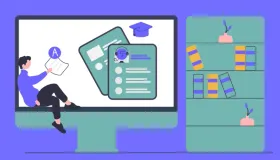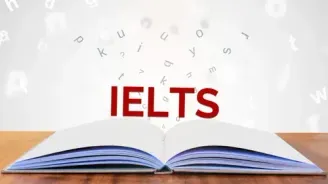Computer Games For Preschoolers Reading Answer Passage
Computer Games For Preschoolers Reading Answer Passage
Paragraph A. For a long time, game developers have focused on “hard core” game enthusiasts, hence, it has become a daunting task for developers to design computer games for children. This article chronicles the research and design process that went into making the Nintendo DS for preschoolers.
Paragraph B. We eventually agreed on three significant goals for our project after meeting with our producers, who are passionate about designing for the Nintendo DS. First, to comprehend the range of physical and cognitive abilities of preschoolers in the context of handheld system game play; second, to understand how preschool gamers control the various forms of play and game mechanics offered by the games that are currently available for this platform moreover to interact with the DS ; third, to appreciate preschooler's parents expectations for portable systems, as well as the purchasing and play circumstances in which game play occurs. We began by conducting 26 in-home ethnographies with preschoolers and their families in three markets across the United States: an East coast urban/suburban area, a West coast urban/suburban area, and a Midwest suburban/rural area, with the goal of yielding a comprehensive database with which to provide more information and insights to our producers.
Paragraph C. There were 15 girls and 11 boys in this study, ranging from 3 years and 3 months to 5 years and 11 months. Additionally, households with a mix of preschoolers with and without elder peers were used because earlier research had indicated that older siblings have an effect on game play (demonstrated, for example, by more advanced motor coordination while using a computer mouse). We stratified the sample into 13 families who had at least one Nintendo DS and 13 families who did not in order to comprehend both "experienced" and "new" preschool users of the platform. One DS was brought to the interview for the kid to play, however, it was only provided to those whose households did not own a DS. This allowed us to see both the instinctive and intuitive movements of the new players (and of the more experienced players when playing new games), as well as the learned movements of the more experienced players. These interviews consisted of the preschooler, at least one parent and often siblings and another caregiver hence, each interview could take about 60 to 120 minutes.
Paragraph D. After each interview, three kinds of information were collected. We gathered data about: the buying decisions surrounding game systems in the household, the family’s typical game play patterns, levels of parental moderation with regard to computer gaming, and the most favourite games played by family members from any older siblings and the parents that were available. Because of these in-home interviews: what types of spaces were used for gameplay, how the system were installed, where the handheld play occurred in the house (as well as on-the-go play), and the number and type of games and game systems owned, we could also understand the ideology of gaming in these homes. The most important thing is that we gathered the game-playing information for every single kid.
Paragraph E. Prior to conducting the interviews, the research team had consulted with the in-house game producers to compile a list of game mechanics and problems related to preschoolers' motor and cognitive abilities that were crucial for them to comprehend before writing the games. These concerns varied from general dexterity challenges with game controllers to the effectiveness of in-game instructions to specific aspects in current games that the producers were incorporating for future preschool games. The moderator gave particular instructions to the preschooler through a series of games throughout the interviews so that he or she could monitor the interaction and probe both the preschooler and his or her parents on sentiments, attitudes, and frustrations that developed in the various circumstances.
Paragraph F. If the subject in the experiment had previous exposure to the DS system, he or she was first asked to play his or her favourite game on the machine. This provided the researchers with information about the child's present gaming competence in relation to the complexity of the selected game, allowing them to observe the child playing a game with familiar mechanics. The Nintendo DS selections were fairly broad among the 26 preschoolers, including New Super Mario Bros, Sonic Rush, Nintendogs, and Tony Hawk's Proving Ground. The interview observed the child play, noting preferences for game mechanic and motor interactions with the device as well as the complexity level each game mechanic was for the tested subject. The researchers asked all of the preschoolers to play a specific game in consultation with our producers, The Little Mermaid: Ariel’s Undersea Adventure. For two major reasons, the game was chosen. The characters that appeal to this young age group was one of the few games on the market. Moreover, a wide range of mechanics was incorporated by it that showcase the distinctiveness of the DS platform which has the ability to use the microphone for blowing or singing.
Paragraph G. The first experiment yielded extensive information. We detailed the designing needs and handed the findings to a firm specialising in game design after examining the results and discussing the implications for the game design with our internal game production team. We collaborated extensively with those specialists to build the game design for the two preschool-targeted DS games under development on what we had gathered.
Paragraph H. A formative research course of action was set up as the two DS games went into the development process. We brought kids into our in-house utility lab whenever we developed new game mechanics to test the mechanics and to evaluate their simplicity as well as engagement. In addition to looking at the overarching game structure, we evaluated either alpha or beta versions of several game elements. We went back into the field test with a dozen preschoolers and their parents once the entire version of the DS game was available to make sure that each of the game aspects worked for the kids, moreover, the overall objective of the game was understandable and the process was enjoyable for players. Parents' opinions on whether the game was appropriate, engaging and worth the purchase were also gathered.
Let’s explore the questions and answers of the Computer Games For Preschoolers Reading passage.
Computer Games For Preschoolers Reading Answers with Sample Questions
Have you read the passage? Now, take the test and find Computer Games For Preschooler's Reading answers! Try to answer these questions by yourself before you sneak a peek at the answers given below.
Check Out Top 35+ IELTS Reading Practice Test Questions with Answers
Below are some top 35+ free IELTS Reading Practice test online questions with detailed answers to enhance your IELTS preparation online. We have provided sample passages for each test type for your reference.
- What Is Exploration Reading Answers
- Effects Of Noise Reading Answers
- The Discovery Of Baby Mammoth Reading Answers
- The Dead Sea Scrolls Reading Answers
- The Ring-Tailed Lemur Reading Answers
- Why We Need To Protect Polar Bears Reading Answers
- Nutmeg A Valuable Spice Reading Answers
- What Is Meaning Reading Answers
- Cutty Sark Reading Answers
- The Step Pyramid Of Djoser Reading Answers
- South Pole Adventurer Reading Answers
- The Future Of Work Reading Answers
- Ambergris Reading Answers
- Trees In Trouble Reading Answers
- Could Urban Engineers Learn From Dance Reading Answers
- The Flavour Of Pleasure Reading Answers
- The Value Of A College Degree Reading Answers
- Why You Should Delegate Tasks To Team Members Reading Answers
- Corporate Social Responsibility Reading Answers
- Forest Management In Pennsylvania USA Reading Answers
- Making Time For Science Reading Answers
- The Power Of Play Reading Answers
- Coastal Archaeology Of Britain Reading Answers
- How The Other Half Thinks Reading Answers
- Changes In Reading Habits Reading Answers
- The Forgotten Forest Reading Answers
- When Conversations Flow Reading Answers
- Attitudes Towards Artificial Intelligence Reading Answers
- The Ingenuity Gap Reading Answers
- A Bar At The Folies Reading Answers
- Booking A Wessex Cottages Holiday Reading Answers
- Sunset Tours Reading Answers
- Bird Migration Reading Answers
- Clutter Bugs Beware Reading Answers
- The Hidden Histories Of Exploration Exhibition Reading Answers
- Calisthenics Reading Answers
- Having A Lovely Time Reading Answers
- The Return Of Huarango Reading Answers
- Summer Activities At London Kew Gardens Reading Answers







